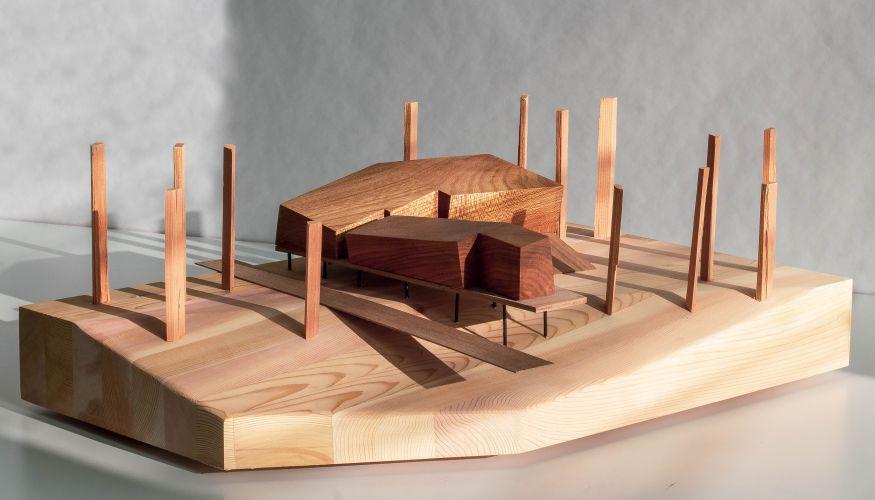What Role Does Architecture Play In Preserving Indigenous Cultural Heritage Sites?

Have you ever wondered about the inspiration behind different architectural designs? Some designs might be inspired by natural landscapes, some might be inspired by designs from yesteryears, while some might come from a different and much closer source – indigenous culture.
One such example is a design created by Alfred Waugh, a member of the Nuu-chah-nulth Nation in British Columbia. The design takes inspiration from the "big houses" or "longhouses", which are traditional dwellings of the indigenous people of the Pacific Northwest. In this post, we will take a closer look at how indigenous culture has inspired architectural designs, and the impact it has.
The influence of Indigenous culture on architecture:
1. Design aesthetics
The design aesthetics reflect the style and tradition of the indigenous people. Some of the common features found in indigenous architecture are the use of natural materials, such as wood, stone, and clay. The designs take into consideration the local climate and are built to withstand harsh environmental conditions. The use of intricate carvings and geometric patterns are also common in indigenous architecture.
2. Environmental sustainability
The traditional knowledge and practices of the indigenous people have been developed and adapted over generations to ensure that their communities and the environment can coexist and thrive together. Incorporating these practices in modern architecture can help to create sustainable and eco-friendly structures. For example, using natural insulation materials, like moss, can help to keep buildings warm in the winter and cool in the summer.
3. Community building
Indigenous architecture is often focused on fostering community building and social interactions. The designs of traditional dwellings, such as longhouses, were made to accommodate large extended families and were the center of social activities. Modern designs that take inspiration from indigenous culture can incorporate these communal aspects, such as creating shared spaces and open areas for social activities.
4. Cultural preservation
Indigenous architecture can also help to preserve and showcase the cultural heritage and traditions of the indigenous people. Designs that incorporate traditional patterns and motifs can help to keep cultural practices alive and pass them on to future generations.
The impact of Indigenous-inspired architecture:
1. Promoting diversity
Indigenous-inspired architecture can promote diversity and cultural exchange. Designs that draw on different cultural traditions can help to create a sense of inclusivity and bring people from different backgrounds together.
2. Promoting education and awareness
Indigenous-inspired architecture can also help to promote education and awareness about indigenous culture. Incorporating traditional patterns, materials, and techniques into modern designs can create a dialogue about the history and culture of the indigenous people.
3. Creating opportunities for indigenous communities
Indigenous-inspired architecture can also create opportunities for indigenous communities. By incorporating traditional materials and techniques into modern designs, it can create a demand for the knowledge and skills of the indigenous people. This can lead to employment opportunities and economic development for the community.
Frequently Asked Questions:
1. What is indigenous-inspired architecture?
Indigenous-inspired architecture is a design style that draws inspiration from the traditional architecture of indigenous peoples. It incorporates traditional materials, geometric patterns, and cultural motifs into modern designs.
2. What are some common features of indigenous architecture?
Some common features of indigenous architecture are the use of natural materials, such as wood, stone, and clay, intricate carvings, and geometric patterns. The designs take into consideration the local climate and are built to withstand harsh environmental conditions.
3. What is the impact of indigenous-inspired architecture?
Indigenous-inspired architecture can promote diversity, cultural exchange, education and awareness about indigenous culture, and create opportunities for indigenous communities. It can also help to foster community building and cultural preservation.
4. How can architects incorporate indigenous culture into their designs?
Architects can incorporate indigenous culture into their designs by drawing inspiration from traditional materials, techniques, and cultural motifs. They can also take into consideration the local climate and social aspects of the indigenous community to create designs that reflect their heritage and traditions.
5. What are some examples of indigenous-inspired architecture?
Examples of indigenous-inspired architecture include Alfred Waugh's design inspired by the "big houses" or "longhouses" of the Pacific Northwest indigenous people, the Tamagawa Takashimaya S.C. in Tokyo, designed by Kengo Kuma, which incorporates wooden latticework inspired by traditional Japanese basket weaving techniques, and the Haida Heritage Centre in British Columbia, designed by David Nairne and Ken Cameron, which is inspired by the traditional Haida longhouse.
Indigenous-inspired architecture is a way of honoring the rich cultural heritage and traditions of indigenous communities. It has the potential to create sustainable, eco-friendly, and inclusive designs that promote diversity, education, and awareness. By incorporating traditional materials, techniques, and motifs, architects can create structures that reflect the history and identity of the indigenous people and help to preserve their cultural heritage for future generations.



Post a Comment for "What Role Does Architecture Play In Preserving Indigenous Cultural Heritage Sites?"